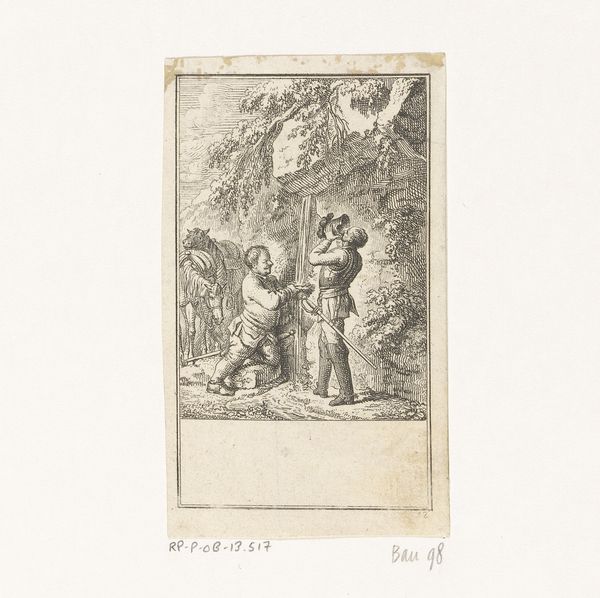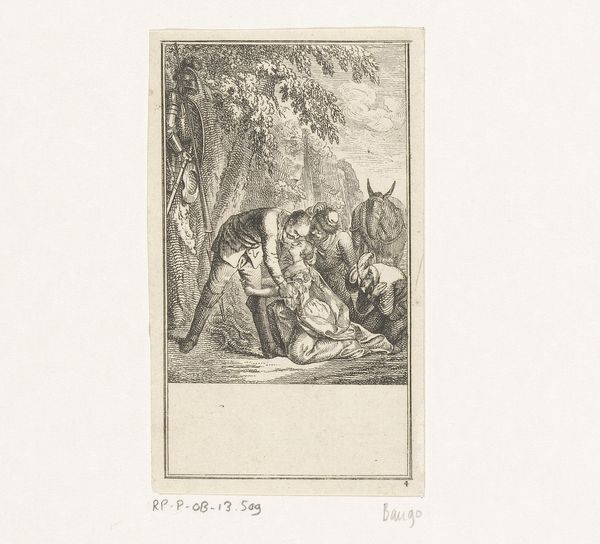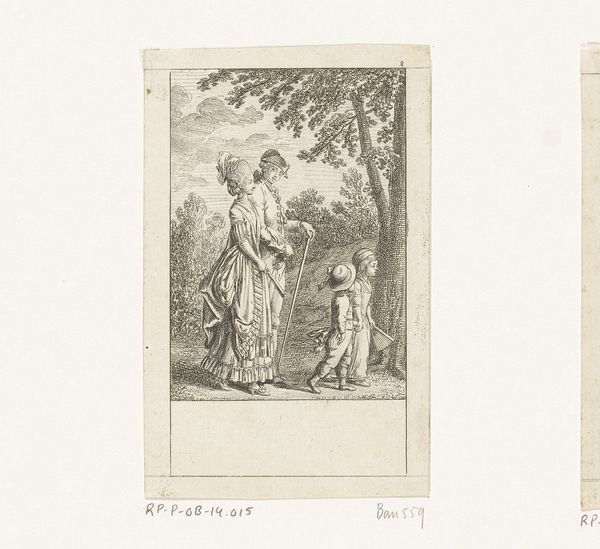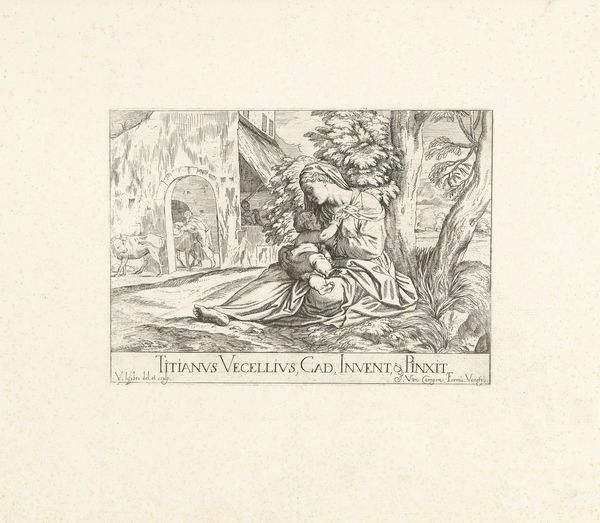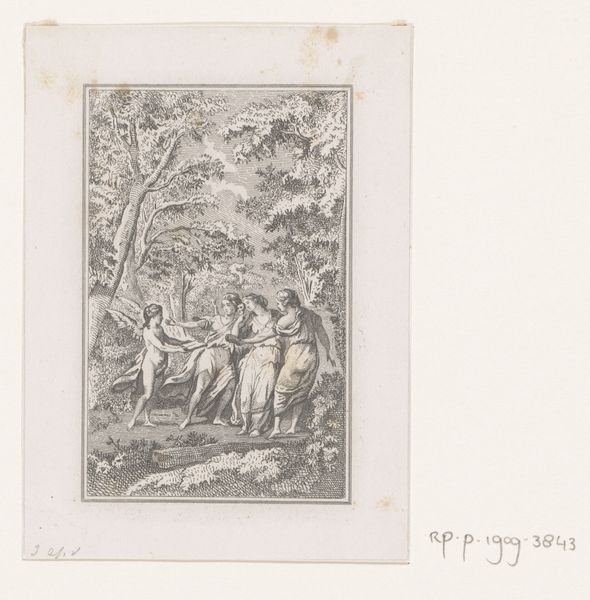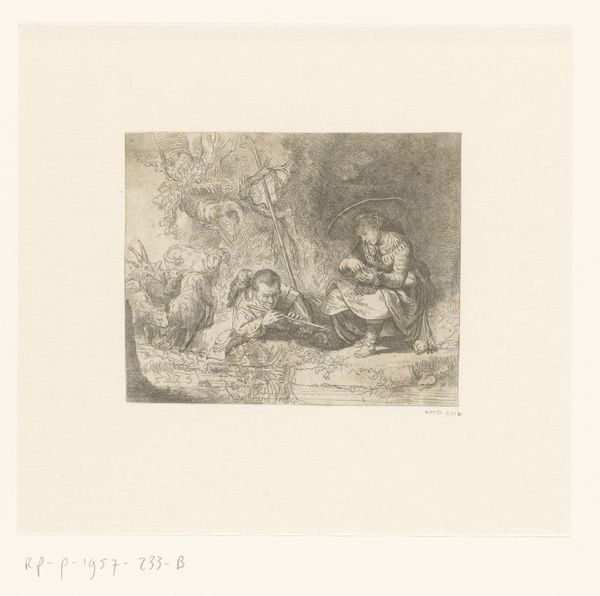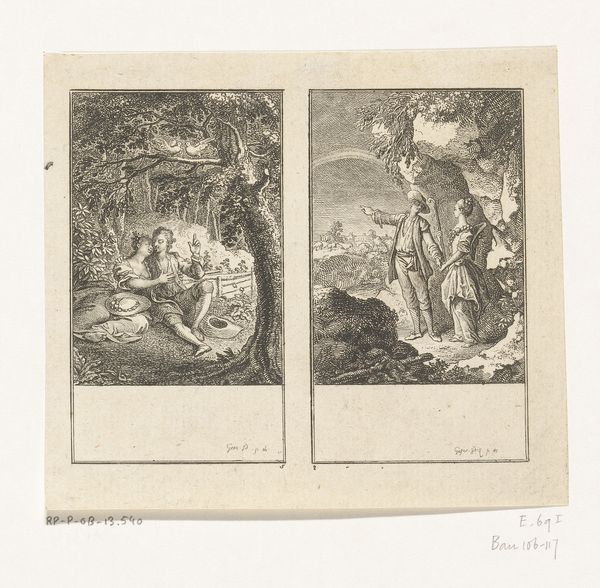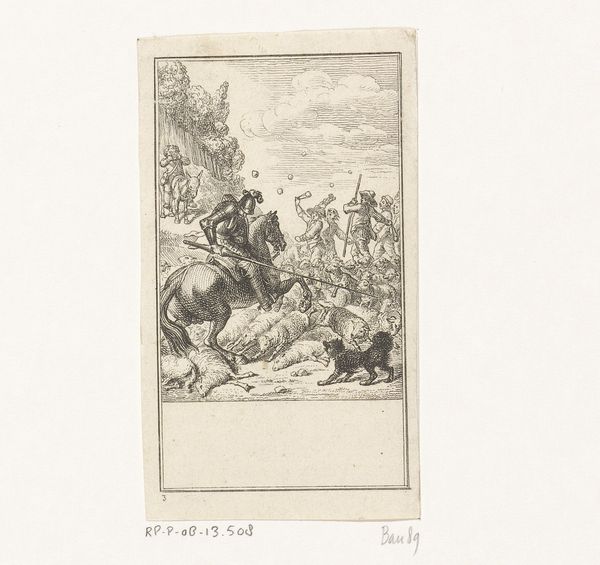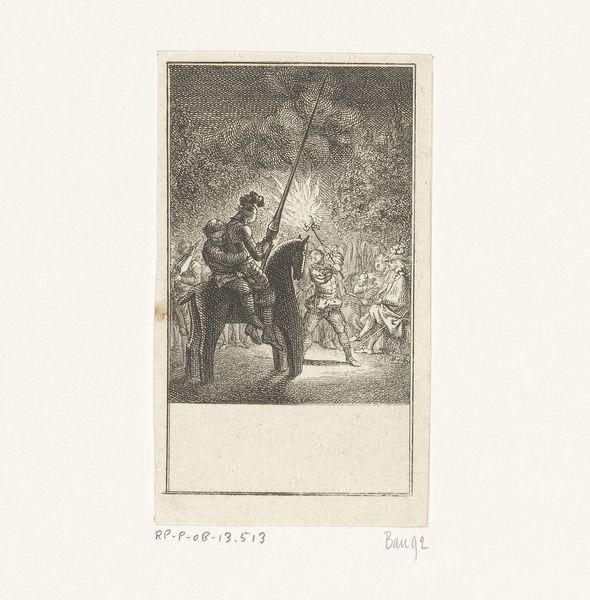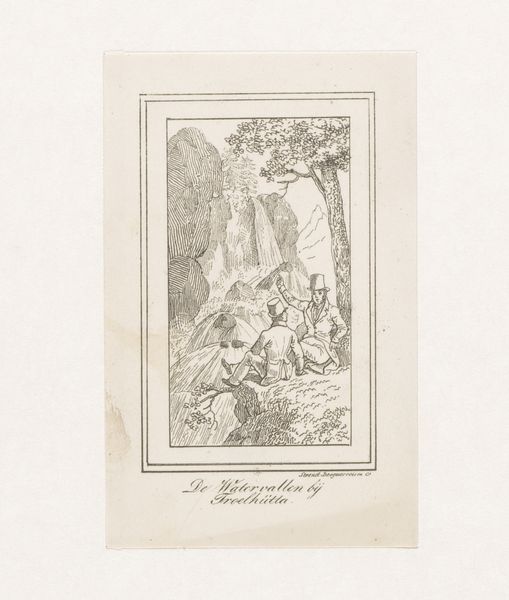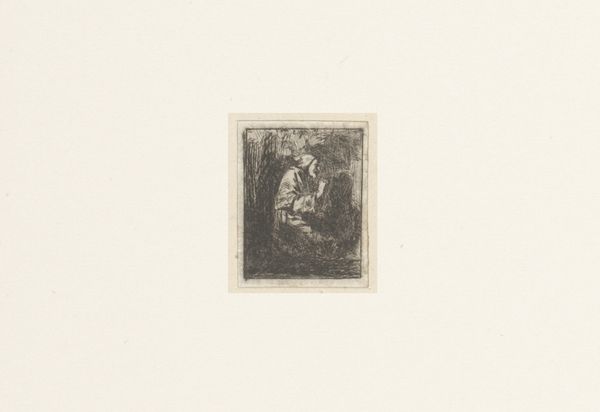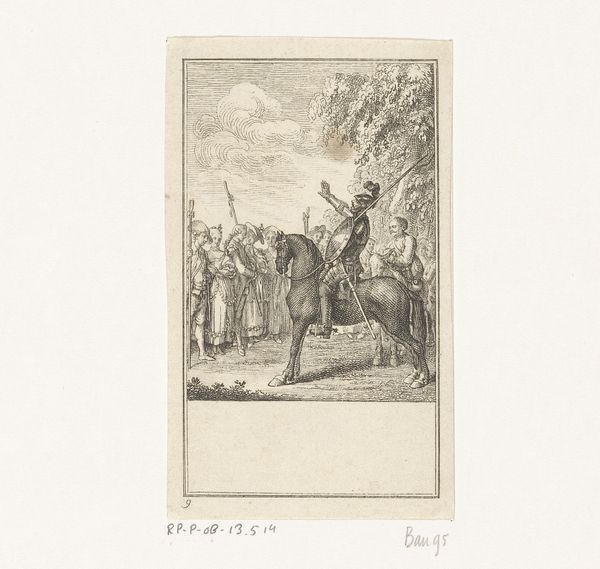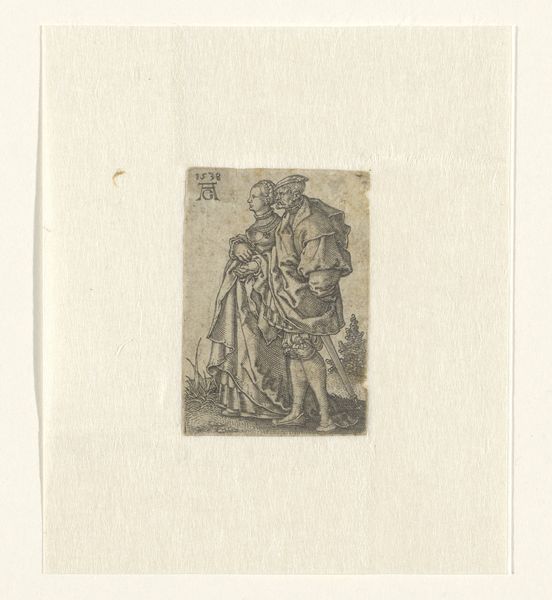
Dimensions: height 98 mm, width 59 mm
Copyright: Rijks Museum: Open Domain
Curator: Ah, yes. Daniel Nikolaus Chodowiecki's etching, "Don Quichot bevrijdt Eugénie", made around 1770. Currently held in the Rijksmuseum. Editor: My first impression is that this is an oddly restrained and claustrophobic rendering of an ostensibly heroic moment. The thicket presses in; even the would-be rescuer looks confined by his armor. Curator: Precisely. The tight, detailed etching style mirrors the narrative's ambiguity. Chodowiecki cleverly uses the Don Quixote myth, a cultural touchstone of chivalry and folly. We recognize Don Quixote, and his rescue of the damsel reinforces archetypes embedded deeply in the collective unconscious. Editor: I agree. And yet, note the sharp contrasts of light and shadow, almost theatrical in their intensity. Chodowiecki manipulates our gaze, moving from the bright figure of Eugénie to the almost grotesque darkness of the knight and back again, forcing the viewer to recognize their role. The bodies on the ground do nothing more than add dimension, tonality. Curator: These sharp contrasts also accentuate the emotional turbulence. Consider the placement of Don Quixote as the cultural ideal. He may see himself as an admirable romantic, but his dark clothing could insinuate to the viewer that his mental delusions have severe consequences on the well-being of those around him. He isn't a positive symbol here, but one of caution and perhaps madness. Editor: You make an excellent point about the possible commentary on mental illness. But, notice how all the lines direct our eye toward the central figures—their positioning almost creates a stage within the larger scene, amplifying the narrative aspects. It emphasizes the interplay between action and perception within that cultural myth you spoke of. Curator: This composition leads us to understand how powerful figures and symbolic images affect culture. In many respects, art like this continues to act as a historical memory. It shapes how future generations perceive the characters involved in historical narratives and provides them with insights into understanding the cultural and philosophical underpinnings of past events. Editor: Thinking about the ways Chodowiecki so neatly compartmentalizes this myth reminds me that artworks often are multifaceted experiences that reveal the artists’ formal intention. It’s fascinating how much meaning can be extracted from what might seem initially like a rather simple rendering. Curator: It truly does go to show how the careful selection of symbols can resonate across time.
Comments
No comments
Be the first to comment and join the conversation on the ultimate creative platform.
